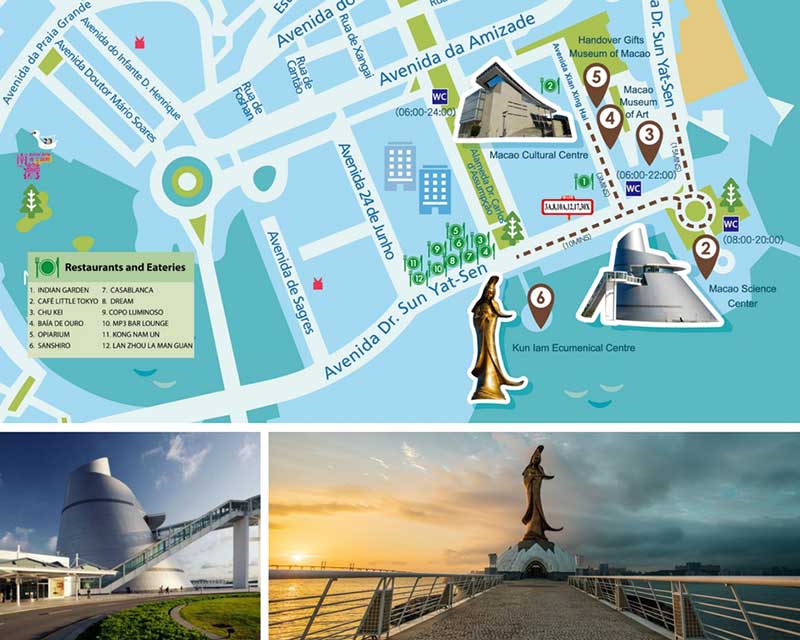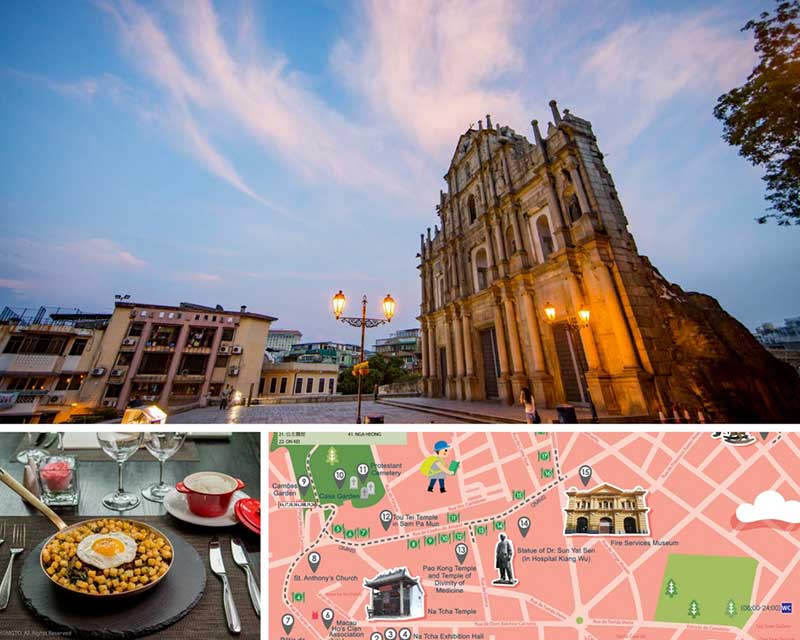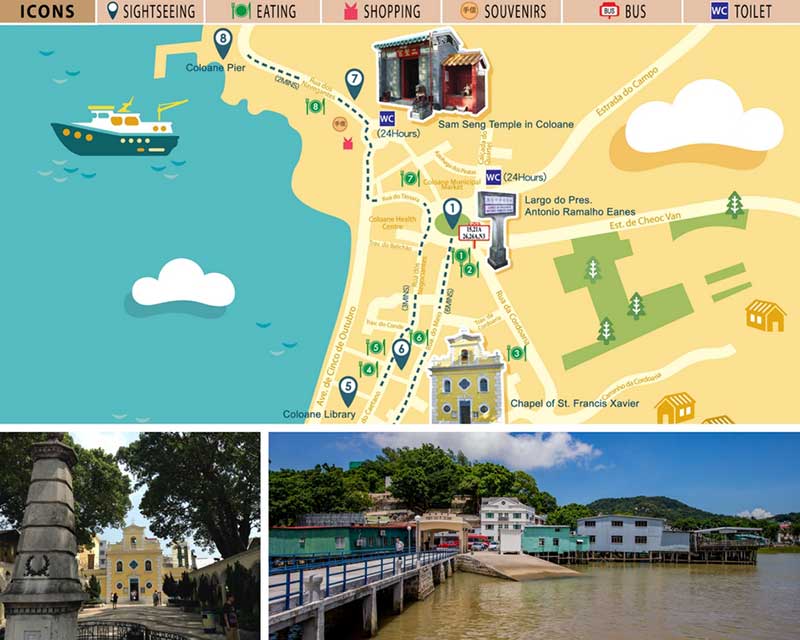One of the advantages of Macao is its compact size. Macao is a city made for walking. Why go? Macao’s historic quarter is a charming blend of east and west. The Historic Centre of Macao has been a World Heritage site since 2005 and is a collection of 20 monuments and squares in the heart of the city.
Why now?
In October 2017, Macao joined 63 other cities to become a UNESCO Creative City of Gastronomy, a well-deserved accolade given Macau’s unique gastronomic culture.
Why walk?
It’s easy to take yourself on a self-guided walking tour of Macao and even easier if you download the Step Out Macao app.
These walking routes cover all the main Macao tourist spots and popular attractions, as well as other lesser-known Macau points of interest.
Along the way, there are opportunities to discover local eateries and shops as well as lesser-known temples, museums and squares.
So pull on your walking shoes and let the Step Out App be your Macau tour guide.
Macau tourist spots self-guided walking tours
1- Footsteps into the Historic Centre
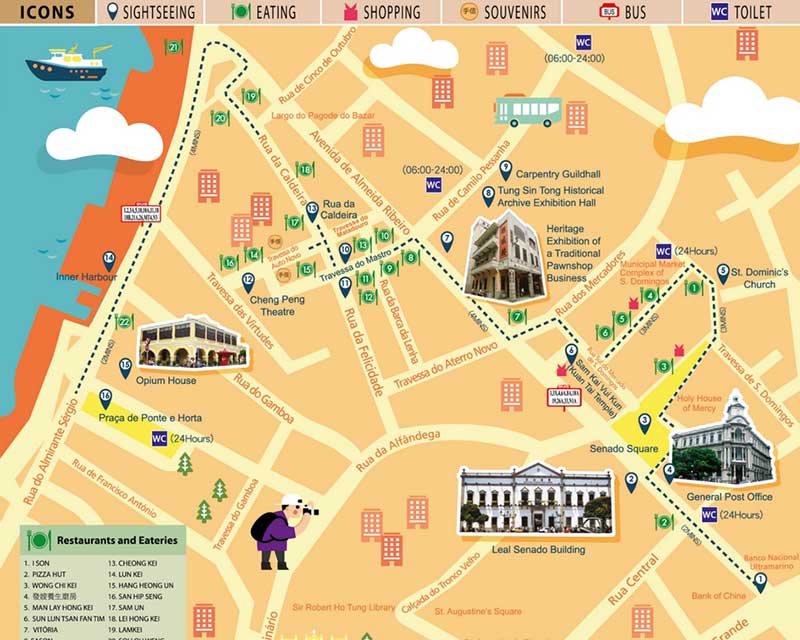
The Footsteps into the Historic Centre self-guided tour starts at the heart of Macao’s historic centre. Senado Square has been Macao’s urban centre ever since the port of Macao opened for trade.
Senado Square’s colourful buildings and Portuguese cobblestone pavements will remind you of parts of Europe, while the Chinese streets signs and red lanterns hanging between the buildings are an indicator of Macao’s Chinese roots.
If it’s not your first visit to Macao, chances are you’ve already visited the Leal Senado Building and St Dominic’s Church. This walking tour heads away from Senado Square to discover hidden treasures, such as the Tak Seng On Pawnshop. The museum is a showcase of a traditional pawnshop business (pawnshops were the foundation of Macao’s commercial activities).
Popular Macao tourist spots: Leal Senado Building, Senado Square, General Post Office Building, St. Dominic’s Church, Sam Kai Vui Kun (Kuan Tai Temple), Opium House, Inner Harbour.
Undiscovered gems: Heritage Exhibition of a Traditional Pawnshop Business, Tung Sin Tong Historical Archive Exhibition Hall, Carpentry Guildhall and Cheng Peng Theatre.
Don’t miss: The view of Macao’s Inner Harbour.
2- Crossroads of China and Portugal
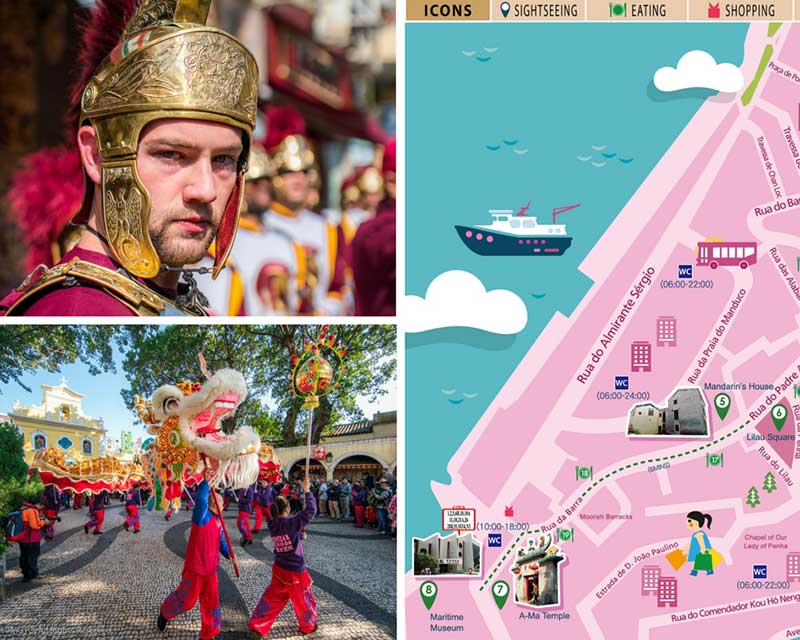
The Ruins of St Paul’s is Macao’s most famous historical landmark.
If you’re keen to discover more intriguing stories behind Macao’s Portuguese past, it’s worth spending a bit of time exploring St. Joseph’s Seminary and Church.
Built in 1728, the seminary was a training ground for missionaries who were sent out to various parts of China and Southeast Asia.
Back then, St Joseph’s was a religious institution with a worldwide reputation for attracting the world’s top religious scholars.
Missionaries flocked to St Joseph’s to study and the institution ran a University-level academic curriculum.
Favourite Macao tourist spots: Senado Square, Mandarin’s House, Lilau Square, A-Ma Temple and Maritime Museum.
Lesser-known gems: St. Augustine’s Square, St. Joseph’s Seminary and Church and St. Lawrence’s Church.
Did you know? St Joseph’s Seminary and Church is home to a piece of bone from the arm of St. Francis Xavier.
3- Enchanting stories of Our Lady of Fatima Parish
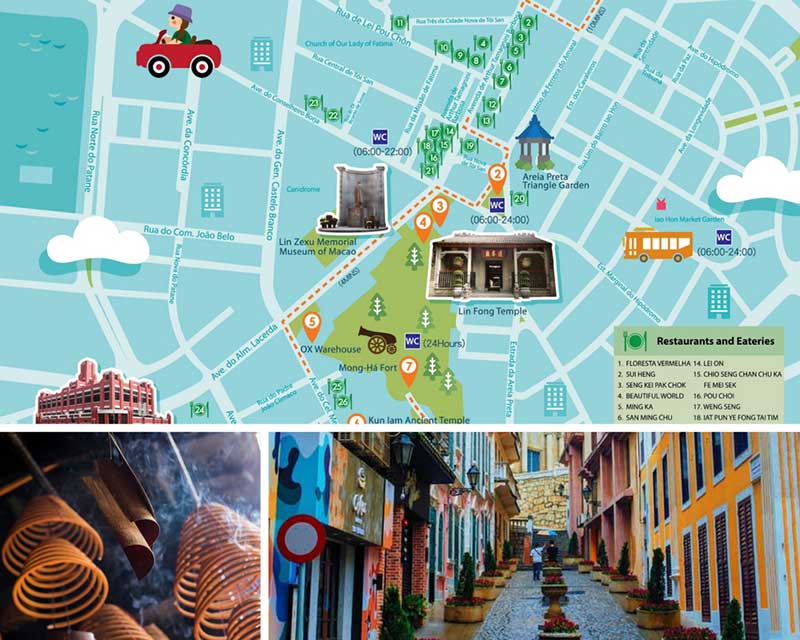
Even if you have visited Macao in the past, there’s a chance you may not have heard the intriguing tales of this neighbourhood.
Wander around this old neighbourhood and discover how the cultures of Portugal and China melded into the fusion it is today.
Most of this walking trail consists of relatively unknown Macao attractions. It’s also a great spot for foodies, as the streets are packed with local restaurants.
Discover Macao’s hidden gems: Arch of Border Gate, Areia Preta Triangle Garden, Lin Fong Temple, Lin Zexu Memorial Museum of Macau, Ox Warehouse, Kun Iam Ancient Temple and Temple of City God, Mong-Há Fort.
Don’t miss: Lin Zexu Memorial Museum of Macau pays tribute to Lin Zexu, a Chinese scholar, poet and official of the Qing dynasty. Lin Zexu was the imperial commissioner to Macao during the reign of Emperor Daoguang and fought against the opium trade that was introduced by the British in Guangdong. Lin confiscated and destroyed 20,000 chests of opium in Humen.
4- Bygone days of Taipa Village
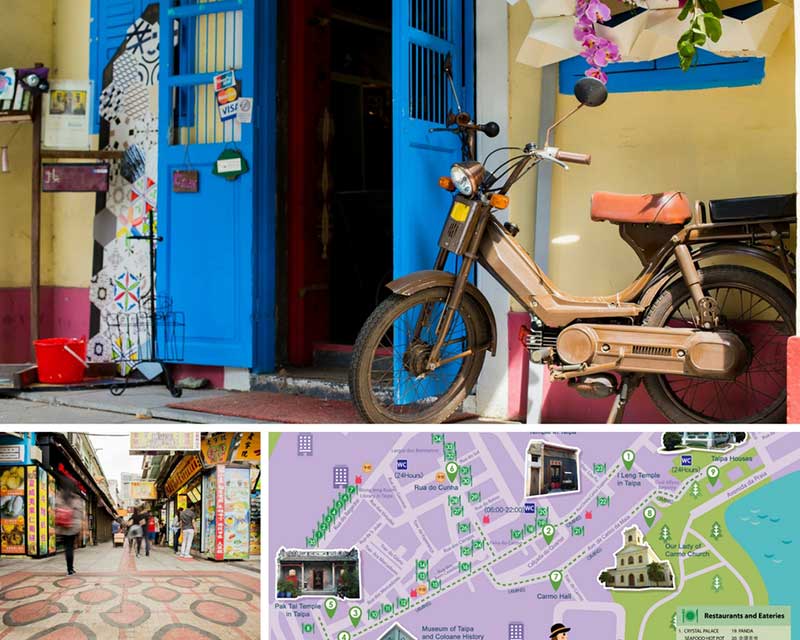
Once a historic fishing village, Taipa is reinventing itself for the 21st century. Taipa used to sit in the shadows of Macao’s rapid casino developments in Cotai.
However, Taipa has recently undergone a renewal, with new dining venues and displays of contemporary arts.
Old Taipa Village is a charming blend of Portuguese and Chinese architecture, with touches of the Mediterranean.
The most popular tourist attraction is the Taipa Houses Museum, which is a colourful row of five peppermint-green houses.
These homes were once private residences and exploring the museums is a peek into Macao’s Portuguese past.
Popular Macao tourist spots: Taipa Houses Museum, Museum of Taipa and Coloane History.
Hidden Taipa gems: I Leng Temple in Taipa, Kun Iam Temple in Taipa, Tin Hau Temple in Taipa, Pak Tai Temple in Taipa, Rua do Cunha, Carmo Hall and Our Lady of Carmo Church.
Don’t miss: Eating a lobster roll or lobster burrito at King’s Lobster Restaurant in Taipa Village.
5- An Experiment of Creativity
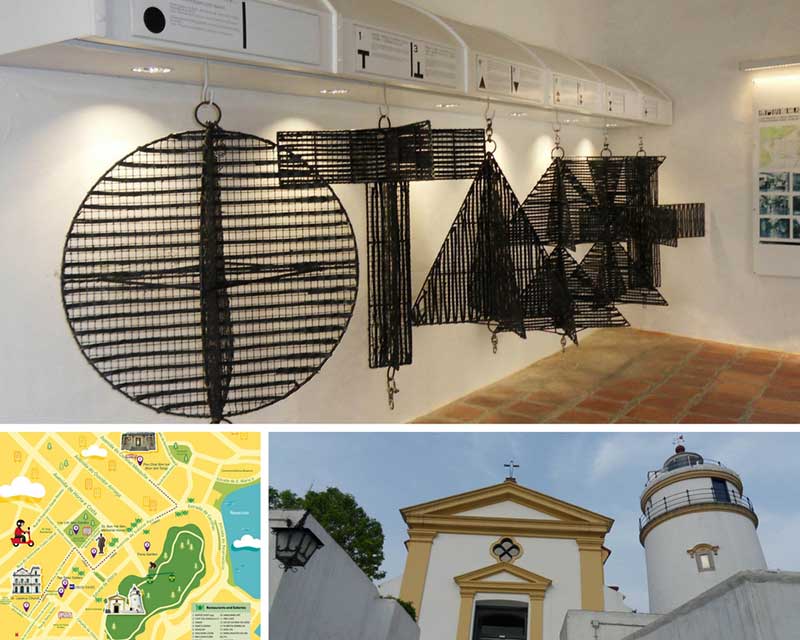
Most visitors to Macao are surprised to discover green spaces and gardens right in the city. The most impressive garden is the Suzhou-style Lou Lim Ieoc Chinese garden. Built by a wealthy Chinese merchant, the garden is an oasis right in the city.
Wandering along garden paths, over bridges and beneath classical Chinese arches and pagodas is calming for the soul. You can hardly believe that the largest casino resort in the world is only kilometres away.
Nearby, explore the Tap Seac Gallery for art exhibitions as well as the building itself. Built in the 1920’s as a family residence, the design has a distinctive European neo-classical flair.
Popular Macao tourist spots: Lou Lim Ieoc Garden, Tap Seac Gallery and Tap Seac Square.
Discover these Macao attractions: Kun Iam Temple, Flora Garden, Dr. Sun Yat Sen Memorial House and St. Lazarus Church.
6- A legacy of arts and culture
Give its small geographical area, Macao has a surprising number of museums. The largest is the Macao Museum of Art, which is a five-storey building with exhibition halls, an auditorium and multimedia library.
Then there’s the Macao Cultural Centre, that attracts performing artists from all over the world, and the IM Pei-designed Macao Science Centre with its uber-modern conical design. This contemporary building houses cool interactive exhibits and has an impressive planetarium.
Macao tourist spots: Macau Fisherman’s Wharf, Macao Science Centre, Macao Cultural Centre, Macao Museum of Art, Handover Gifts Museum of Macao, Kun Iam Ecumenical Centre.
Don’t miss: The impressive displays of gifts from world leaders at the Handover Gifts Museum of Macao.
7- The marriage of east and west in St Anthony’s parish
The spice trade brought the Portuguese and Macao became a key port along the Portuguese trade routes. Macao was a key link between east and west, from Lisbon to Goa via Malacca. It was also a key trading port between China and Japan. The Portuguese traded Chinese silk and Japanese silver between Guangzhou and Nagasaki through Macao.
The Ruins of St. Paul’s and the nearby Na Tcha temple are a reminder of how Chinese and Portuguese cultures have coexisted in Macao.
Built in 1888, Na Tcha temple is dedicated to the worship of the deity Na Tcha (the god of war).
The Ruins of St Paul’s itself is Macao’s most famous monument. The church was destroyed by a fire in 1835 but you can still see signs of the melding of eastern and western cultures on the facade, which has bas-reliefs in various patterns, such as chrysanthemum and peony, moon, sun as well as Chinese inscriptions.
Favourite Macao tourist spots: Ruins of St. Paul’s, Section of Old City Wall, Na Tcha Temple and Exhibition Hall, St. Anthony’s Church and Camões Garden.
Undiscovered gems: Macau Ho’s Clan Association, Pátio da Eterna Felicidade, , Casa Garden, Protestant Cemetery, Tou Tei Temple, Pao Kong Temple and Temple of Divinity of Medicine, Statue of Dr. Sun Yat Sen (in Hospital Kiang Wu), Fire Services Museum, Lin Kai Temple, San Kio Garden, Rotunda de Carlos da Maia and Ye Ting Residence.
8- Nostalgia in Coloane
Swim at Hac Sa Beach, take a stroll along Cheoc Van Beach or along Coloane Pier. Spending time in Coloane is like going for a drive into the countryside, only, it’s not far from Macao’s vibrant Cotai Strip.
Coloane also has hiking trails and the former fishing village is a reminder of a past era. Coloane Village is a charming square dominated by the picturesque Chapel of St Francis Xavier.
Discover these lesser-known Macao tourist spots: Largo do Presidente António Ramalho Eanes, Ancient Temple of Kun Iam in Coloane, Ancient Temple of Tin Hau in Coloane, Tam Kong Temple in Coloane, Coloane Library, Chapel of St. Francis Xavier, Sam Seng Temple in Coloane and Coloane Pier.
Don’t miss: Sinking your teeth into a Macanese egg tart at Lord Stow’s Bakery, where this version of egg tart was invented.
Discover Macao
Download the Step Out Macao app for iPhone (from the App Store) and for Android devices (from Google Play).
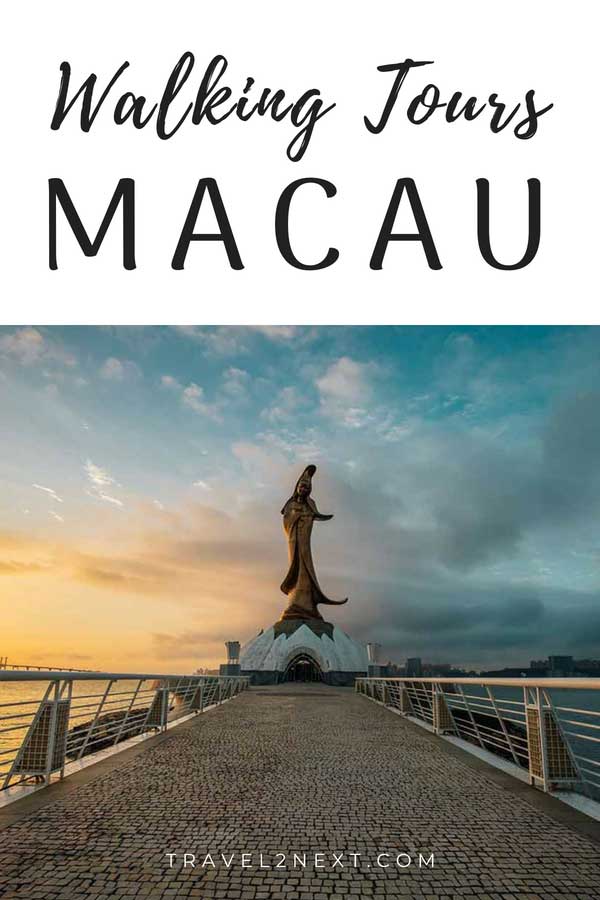
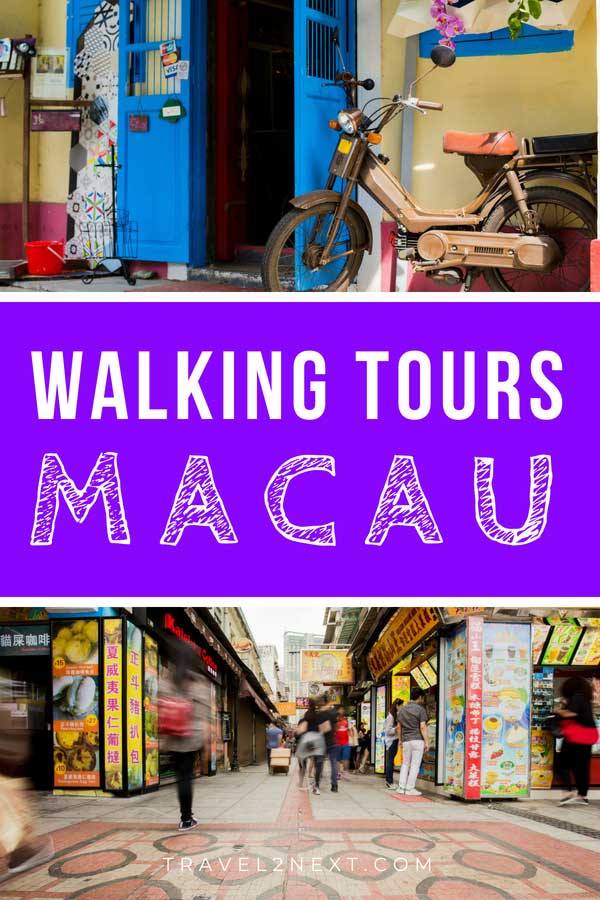
Plan Your Trip
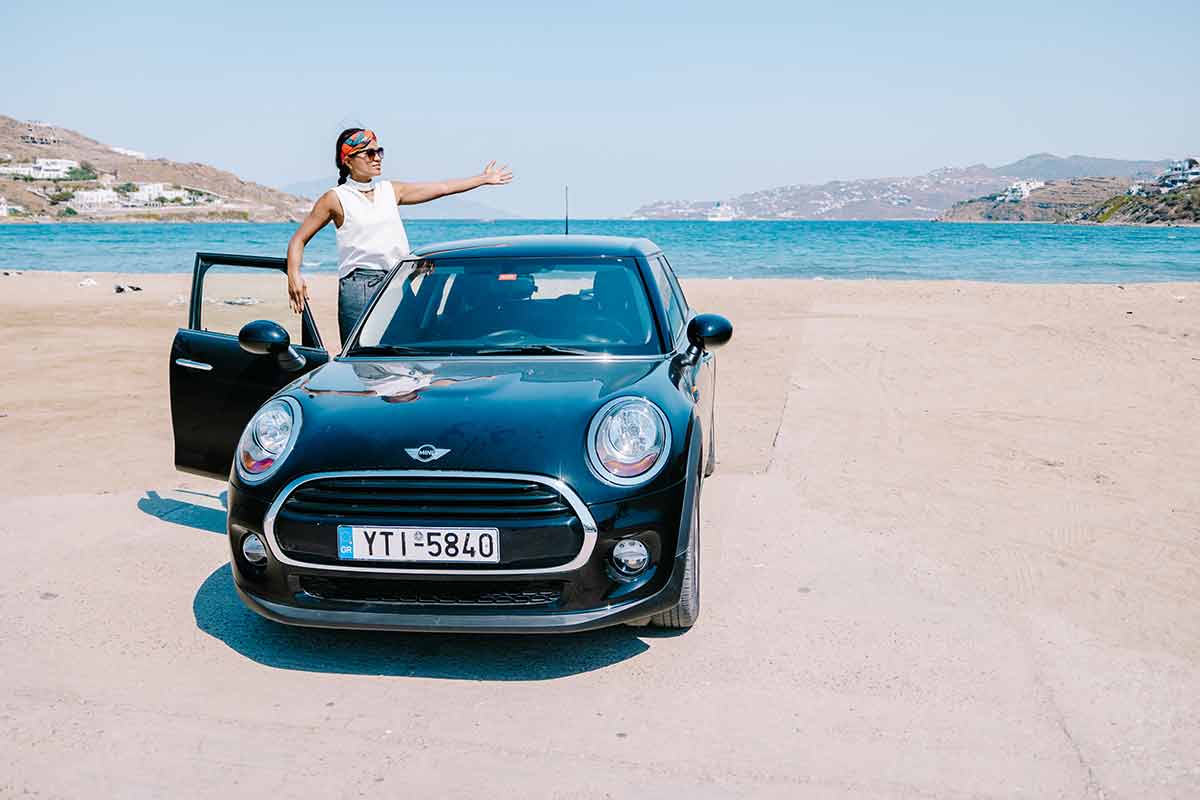
Rent A Car – Find the best car rental rates at Discover Cars. They compare car hire companies to provide you with the best deal right now.

Find A Hotel – If you’re curious about this article and are looking for somewhere to stay, take a look at these amazing hotels.
